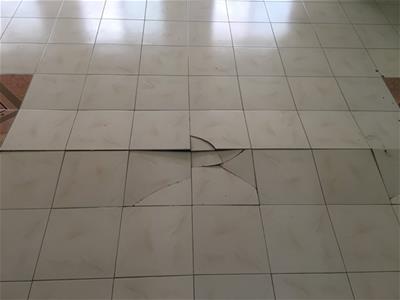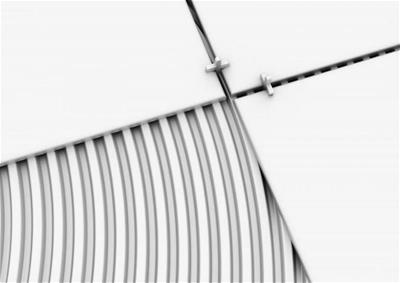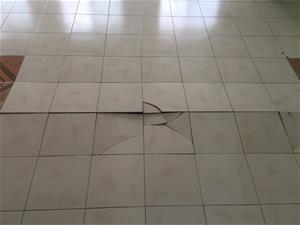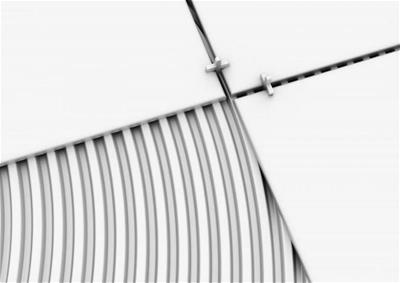Lantai ubin adalah umum ditemukan di banyak tempat tinggal dan komersial karena daya tarik estetika, perawatan yang mudah dan berbagai macam desain dan jenis ubin yang menarik tersedia di pasaran.
Setiap ubin akan membutuhkan pemasangan dan perawatan yang tepat untuk memastikan daya tahan jangka panjang. Detail pemasangan dan desain yang tidak tepat dapat mengakibatkan kegagalan daya rekat, yaitu debonding, ubin terangkat, pecah atau retak, dll.
 Fenomena di balik ubin menggelembung
Fenomena di balik ubin menggelembung
Jadi apa yang terjadi sebelum ubin menggelembung? Ubin terkompresi satu sama lain, sehingga menciptakan ketegangan antara ubin dan alas ubin. Proses lepasnya ubin dari alas ubin dimulai, lalu ubin secara bertahap kehilangan daya rekatnya dengan alas ubin sambil menahan tekanan tekan. Proses ketidakstabilan terjadi secara bertahap, dan tekanan terhadap ubin berubah dan menyebabkan terangkat.
Mari kita lihat alasan yang menyebabkan fenomena ini dan tindakan yang harus dilakukan untuk mencegahnya:
1. Ekspansi atau penyusutan
Saat lantai terkena perubahan suhu atau kelembapan yang drastis, lantai bisa membengkak atau menyusut lebih cepat dari ubin. Penyusutan juga dapat terjadi karena pemadatan alami beton saat diawetkan atau karena beban bangunan seiring bertambahnya usia.
Pencegahan: Gabungkan sambungan ekspansi (sambungan gerak) di sekeliling permukaan ubin serta di dalam permukaan pada interval yang sesuai untuk lantai yang luas. Sambungan ekspansi harus disisipkan dimana ubin berbatasan dengan permukaan penahan, seperti dinding perimeter, kolom, trotoar, tangga yang dipasang ke lantai. Sambungan ekspansi direkomendasikan di semua area di mana kondisi yang dapat menghasilkan tekanan cenderung ekstrim, misalnya, perubahan suhu yang besar dan cepat seperti dekat jendela.
2. Curing pada screed tidak dilakukan dengan benar
Jika screed beton atau semen / pasir tidak dilakukan proses curing dengan benar, fase penyusutan besar dan retakan susut pengeringan dapat terjadi setelah pemasangan ubin.
Pencegahan: Biarkan kering secukupnya.
3. Menggunakan jenis perekat yang salah
Aplikasi luar ruangan memerlukan perekat ubin yang berbeda dibandingkan dengan pemasangan dalam ruangan. Perekat ubin juga harus sesuai dengan jenis media dan lokasinya. Kondisi lingkungan di mana permukaan ubin berada harus diperhitungkan. Misalnya, lingkungan eksternal yang terpapar perbedaan suhu yang cukup besar, lingkungan publik dan industri di mana permukaan ubin mengalami tekanan mekanis yang tinggi.
Pencegahan: Gunakan perekat yang dapat berubah bentuk untuk lokasi yang mengalami variasi termal, atau saat memasang ubin pada media yang dapat berubah bentuk. Perekat dicirikan oleh klasifikasi "S1" atau klasifikasi "S2" sesuai dengan standar EN 12004 atau ISO 13007-1. Deformabilitas didefinisikan sebagai kapasitas perekat yang diperkeras yang akan berubah bentuknya oleh tekanan antara ubin dan alas ubin (substrat) tanpa kehilangan daya rekat atau kerusakan pada permukaan yang dipasang.
Klasifikasi "S1" mengacu pada perekat yang dapat dideformasi dan klasifikasi "S2" mengacu pada perekat yang sangat mudah berubah bentuk. Kelas yang dapat dideformasi hanya berlaku untuk perekat yang mengandung semen (Tipe C) dalam standard. Produk Mapei dalam Deformable Classes ini meliputi:
Keraflex Maxi S1, Kerabond T + Isolastic 50, Kerabond T + Isolastic, Granirapid, Elastorapid, dll.
4. Lebar sambungan atau butt joint tidak mencukupi
Tidak adanya sambungan atau lebar sambungan yang tidak mencukupi antar ubin tidak memungkinkan ruang untuk ubin mengembang, yang juga dapat menyebabkan ubin menggelembung.
Pencegahan: Buat lebar sambungan antar ubin yang lebih lebar jika memungkinkan. Untuk ubin lantai, lebar sambungan minimum yang disarankan tidak boleh kurang dari 3mm. Saat menggunakan ubin yang diekstrusi, lebar sambungan harus lebih lebar, setidaknya 6-10 mm, dengan mempertimbangkan toleransi pembuatan jenis ubin.
 Perhatian yang lebih besar dalam instalasi pemasangan dapat memberikan kontribusi yang efektif untuk mencegah kerusakan ubin.
Perhatian yang lebih besar dalam instalasi pemasangan dapat memberikan kontribusi yang efektif untuk mencegah kerusakan ubin.
Hubungi kami untuk kebutuhan project anda




Comments
Load more comments